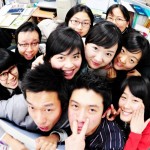Asians in Western Drama
 Western traders have been accredited for the appearance of the Asian characters in western drama. The provided support for this statement is the examples of the production “MISS SIAGON”, “Pacific Overtures”, and “Yellow Face”. All three are the Asian influenced musicals and are the supportive assistance for the opening statement of my paper. I will have a brief look to highlight the role of the western trade and the appearance of Asian character in its very essence in every of the above mentioned plays while drawing inter textual and intra textual comparisons.
Western traders have been accredited for the appearance of the Asian characters in western drama. The provided support for this statement is the examples of the production “MISS SIAGON”, “Pacific Overtures”, and “Yellow Face”. All three are the Asian influenced musicals and are the supportive assistance for the opening statement of my paper. I will have a brief look to highlight the role of the western trade and the appearance of Asian character in its very essence in every of the above mentioned plays while drawing inter textual and intra textual comparisons.
Miss Saigon is a tragic tale and reveals us the doomed romance of an Asian woman who was surely abandoned by her American lover. Asian woman symbolizes here the tragedy of the fate which often haunts Asian female characters by the dazzling attire of the western characters landing on their land. It also stands for winning the sympathy of the audience at the end and historically revives the tradition where Asians have always been down trodden by the western footsteps. It was a typical exploitation which led a Vietnamese bar girl falling in love with an American and opening the doors of herself dignity to him. Asian history is repellent with such examples and incidents happening during war as like the atmosphere of “Miss Saigon”.
Kim, who though failed to win the title of “Miss Saigon”, yet was the real charm who won the heart of Chris. It was not but the fear of every Vietnamese to leave Saigon before it falls and leave with the winning raffle. Kim being an orphan reaches at the Engineer’s club to earn the livelihood. It was sheer her innocence that moved Chris and he let the poor Asian girl to engross in his love. The very words “Sun and Moon” are the symbols of how far and distant lands residential have come across like the two creations at the sky. One brightens the day like the dazzling American Chris and is begged by every prostitute at the club.
The portrayal of Kim is very typical of Asian characters that wish and dream of new western life free of fears of being caught up and prisoner or being lost in War’s horrors. Kim stands for the ardent urge of finding peace and serenity in life. Kim’s tragic tale turns when Chris is in the premises of American embassy and the gates outside are closed.
Kim’s son Tam, a three years child is a symbol of lost identity being an off spring of American father whose no news is heard over years. The writer is very specific in mentioning Tam having an American father who is lost in new life with his new life.
It is very kind of the writer that his pen took side of Kim a poor Asian girl which is very unusual of western playwrights who have always been introducing their Asian characters mere as symbols of disgust and the race prejudice. Therefore “Miss Saigon” is remarkably known in the changing history of depiction and narratives.
Claude Michel has portrayed the character of “Kim” in reverse of the western tradition where Asians were taken to show the vivid contrast of the western modernization with the Asian ignorance. Michel also went a step ahead and did not only focus on the struggling efforts of poor Asians to make their lives better but also touched upon the rich tradition of their folk and culture through music and lyrics. Engineer’s club in general and Kim in particular is the sect who thrives and longs for a better life and spends whole youth in building their castles in air. Therefore they are easily deceived and sacrifice their whole life in nurturing a simple pledge.
“Pacific Overtures” resembles with “Miss Saigon” in the sense that the play brought the same theme of secluded nation here. Asian art has been revived through the musical in the way Japanese have reacted to the American decision of establishing a “floated kingdom”. The way the Japanese went for their self defense and made Americans plan a big failure apparently brings audience to give applause for the Asian appearance who can go to the last extent for holding up their identity and bidding the westerns away from their land. This is very unusual of the stereotypical appearance of the Asian souls in the western plays where audience assumes any Asian found in the play, longing to be a part of the western land and getting ready to sell everything for having the dream land life that the Western world seems to bring. Pacific Overtures is a big revival which has brought back a sense of dignity, respect and self consolidation to the Asian land. The horrified Americans come back with the camouflaged strategies for exploiting the ever thirsty Asians and brought them ultimately to the point of having their own axe to grind.
In the consecutive series of tragic and funny vignettes, we find the same Asian people adopting their own ways and rising from the medieval civilization, travelling and jumping through the long yards of poverty to the crown of the world power.
The use of the western lyrics in the Japanese version brings a beautiful and artistic blend of Asian art embedded in the tapestry of the western plays. “Someone in a Tree” is the best example revealing the negotiation between Japanese and an American; indeed it is symbolically a conversation between a milestone and a ladder, between the glowing present and the ignorant past making a stone foundation for historic art. The story is long but I have to end this write up. Therefore, I promise my readers to write a second part of my tale.
By: Ammarah Khan



